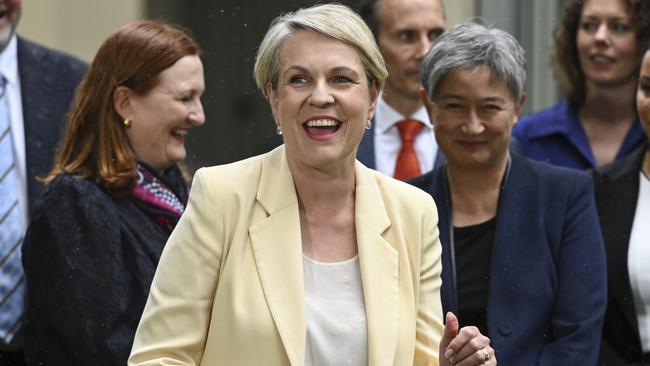Millions spent on extra red tape for federal environment enforcers
New figures reveal a sharp rise in enforcers in the Environment Department, as the resources sector sounds the alarm on major project delays.

New research shows the total number of staff employed by the federal government in regulatory roles will increase by 9 per cent – from 90,620 to 98,814 – with the largest increases in the Climate Change, Energy, the Environment and Water portfolio.
The Institute of Public Affairs has compiled the research based on an analysis of the 2023-24 federal budget but, specifically, the portfolio budget statements which contain information relating to staffing levels and staffing costs for each government portfolio.
Over the next year, all the federal government portfolios – excluding the Defence portfolio – are expected to increase staffing levels for those involved in regulatory activity.
Five federal regulatory agencies are expected to increase their staffing numbers by more than 30 per cent in the current financial year and four of these are concerned with environmental regulation.
They include the Climate Change Authority; the Department of Climate Change, Energy, the Environment and Water; the Murray Darling Basin Authority and the National Offshore Petroleum Safety and Environmental Management Authority.
Environment Minister Tanya Plibersek rejected any suggestion the staffing increases meant the government was not committed to an efficient approvals process for projects in the resources sector. She instead argued Labor was seeking to ensure that more environmental approvals were made on time.
Looking at the Department of Climate Change, Energy, the Environment and Water, the IPA’s latest analysis found the number of staff in regulatory roles would increase this year by 51 per cent – more than three times any other portfolio.
This translates to an increase in regulatory staff numbers from 3,311 to 4,988 between 2022-23 and 2023-24.
The analysis also found that total federal government spending on staff this year within the Climate Change, Energy, the Environment and Water portfolio would increase by 32 per cent, from $488m to $645m.
This compares to increases in spending on staff across the federal regulatory network of only seven per cent, from $12.26bn to $13.12bn.
The increase in environmental regulator staffing levels comes shortly after the resources sector sounded the alarm in January on 72 projects worth more than $68bn across the nation’s top three exports – coal, iron ore and oil and gas – that had failed to advance over the previous 12 months.
Minerals Council of Australia chief executive Tania Constable said that Labor had “gone out of its way to ensure the policy settings related to resources are anti-competitive”.
The IPA on Thursday argued the increasing staffing levels in the Climate Change, Energy, the Environment and Water portfolio was a clear sign of intent from the federal government that it would “continue the obstruction of projects in the resources sector.”
Lead researcher on the analysis, Lachlan Clark, told The Australian: “Increasing the number of environmental bureaucrats in Canberra by more than half shows how the federal government is curtailing growth in Australia’s critical resources sectors, no doubt to placate inner-city demands.”
“With productivity collapsing, rather than expanding the already huge regulatory burden on Australia’s most productive industries, the federal government should be cutting red tape to generate investment.”
Ms Plibersek rejected the criticism, saying that “the exact opposite is true.”
“The Liberals and Nationals slashed funding to the environment department by almost 40 per cent. That meant less than half of environmental approval decisions were made on time,” she told The Australian. “In some periods the approval rate dropped to as low as zero on time decisions.”
“The Australian National Audit Office found that of these decisions, 79 per cent were non-compliant or contained errors. That’s why in Labor’s first budget we boosted funding to the department with $117 million to help clean up their mess and improve approval times for all projects.”
Opposition environment spokesman, Jonathon Duniam, said the increase in environmental regulator staff was “another example of the Albanese government treating taxpayer money like confetti, even during a cost of living crisis.”
“Even after hiring another nearly 1500 more bureaucrats … Tanya Plibersek’s department is making significantly less (and more delayed) EPBC assessments compared to the Coalition,” he said. “Ms Plibersek needs to explain why so much money is being wasted on such a deterioration in performance.”
The IPA previously releasing research showing red tape at the federal level had increased by 88 per cent since 2005 and was growing at a rate two-thirds greater than the overall growth in the national economy since 2005.
Its most current update has suggested that, in 2023, there were approximately 304,000 people employed in the primary industries of agriculture, forestry, and fishing sectors – meaning there was one regulator for every three farmers in Australia.








To join the conversation, please log in. Don't have an account? Register
Join the conversation, you are commenting as Logout